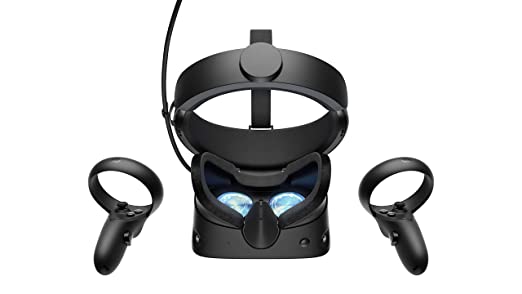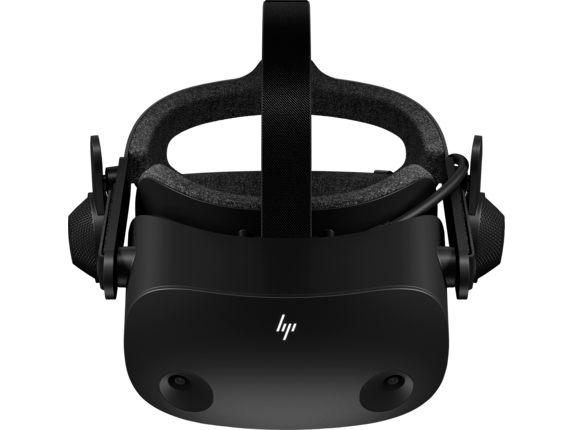Oculus Rift S vs HP Reverb G2
When you compare the Oculus Rift S to the HP Reverb G2 you can see which VR Headset is better. Let's take a look of the comparison, and see which model of VR Headset out ontop.
What VR Headset is better?
Comparing the two VR headsets, the Oculus Rift S and HP Reverb G2, it is clear that they both offer advantages in terms of features.
When considering field of view, the Oculus Rift S has a slightly wider range with 115° compared to 114° for the HP Reverb G2. This is a slight advantage for the Rift S.
In terms of resolution, however, the HP Reverb G2 has an advantage with its 2160 x 2160 px resolution compared to 2560 x 1440 px for the Oculus Rift S. This offers greater detail and more clarity when using either headset.
The minimum CPU requirements are relatively similar between both models; Intel i3-6100 / AMD Ryzen 3 1200, FX4350 or greater for the Oculus Rift S and Intel Core i5, i7 or Intel Xeon E3-1240 v5 equivalent or better for the HP Reverb G2. The graphics required for each model varies quite significantly with Nvidia GTX 1050Ti / AMD Radeon RX 470 or greater needed for the Oculus Rift S while Nvidia GeForce GTX 1080 or AMD Radeon RX 5700 (or Professional Workstation: Nvidia Quadro P5200 or AMD Radeon Pro WX 8200) is required by HP Reverb G2.
Both headsets support 360 tracking and room scale but differ in their refresh rates with 80 Hz on The Oculsus Rift S and 90 Hz on HP Reverb G2 - this means images appear smoother when using either device but particularly when using HP's offering due to its higher refresh rate.
Overall I found both headsets comfortable to wear over extended periods however if I had to choose one I would pick HP's offering due its superior resolution as well as faster refresh rate which adds more realism when using it along with providing users a sense of immersion like no other virtual reality headset can match currently!
Specs comparison between the two VR Headsets
| Oculus Rift S | HP Reverb G2 | |
|---|---|---|
| Overview | ||
| Brand | Meta | HP |
| Model Name | Rift S | Reverb G2 |
| Release Date | 2019 | 2020 |
| Country of Origin | United States | United States |
| Category | PC VR | Mixed Reality |
| Display | ||
| Field of View | 115° | 114° |
| Resolution | 2560 × 1440 px | 2160 x 2160 px |
| Refresh Rate | 80 Hz | 90 Hz |
| Display Type | LCD | LCD |
| Minimum Requirements | ||
| Min. CPU Required | Intel i3-6100 / AMD Ryzen 3 1200, FX4350 or greater | Intel Core i5, i7 or Intel Xeon E3-1240 v5, equivalent or better. AMD Ryzen 5 equivalent or better |
| Min. Graphics Required | Nvidia GTX 1050Ti / AMD Radeon RX 470 or greater | Nvidia GeForce GTX 1080 or AMD Radeon RX 5700 or Professional Workstation: Nvidia Quadro P5200 or AMD Radeon Pro WX 8200 |
| Min. RAM Required | 8 GB | 8 GB |
| Operating Systems | Microsoft Windows | Microsoft Windows |
| Sizing | ||
| Weight | 500 g | 550 g |
| Dimensions | 186 x 75 x 84 mm | |
| Features | ||
| Room Scale? | YES | |
| 360 Tracking? | YES | YES |
| Positional Tracking? | YES | YES |
| Front Camera? | YES | YES |
| Eye Tracking? | No | |
| Usable with Glasses? | YES | |
| Cooling System | No | |
| Built in Headphones? | YES | YES |
| Built in Microphone? | YES | |
| Flip Visor? | YES | |
| Voice Command? | YES | |
| IPD Adjustment? | No | YES |
| Lens to Eye Adjustment? | YES | YES |
| USB? | YES | YES |
| MicroUSB? | No | |
| Display Port? | YES | YES |
| Mini Display Port? | YES | YES |
| HDMI? | YES | |
| MicroSD? | No | |
| Bluetooth? | YES | YES |
| Wifi? | No | |

